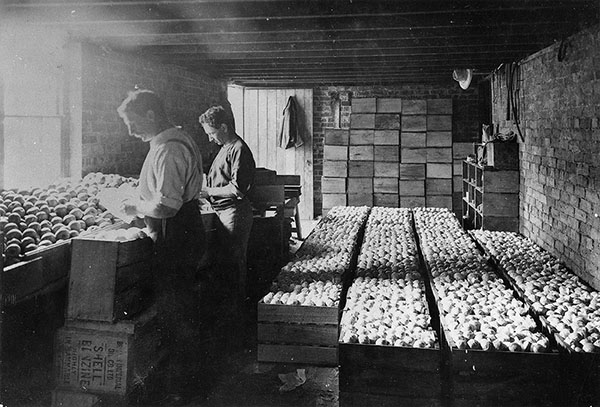by Ross MacMillan
This article first appeared in the Eltham District Historical Society May 2015 newsletter and is reproduced here with permission of the author
The area known originally as the Shire of Eltham lies on the wooded southern slopes and along the valleys of the Great Dividing Ranges. It is drained by the Plenty and Yarra Rivers and various creeks which run mainly in their mountain and valley tracts; many flow all year except in very dry periods. These provided land suitable for grazing and food production for the early Victorian settlement.
After the Duffy Land Act in 1862 broke up the larger sheep ‘runs’ that lapped over into the area from the Plenty River valley, the new settlers to the western part of the Shire would have been confronted with hills covered with open bush-land growing dry climate Eucalyptus varieties such as Stringy Bark, Yellow, Apple and Grey Box, etc.
These stout hearted men and women who settled along those valleys would also have found kangaroos and other native species living on what they called Wallaby, Kangaroo and other native grasses. These can still be readily found in remnant native bush, on roadside verges and in cemeteries, etc.
Early closer settlements were based on timber and later on gold mining, which followed the significant discovery of gold in the Yarra Valley at Andersons Creek. Early mines at Diamond Creek, Queenstown (now St. Andrews), Panton Hill and Arthurs Creek promoted development but were not productive enough to maintain a long-term extractive industry.
Early farming accompanied those mining activities and grew with the decline in the gold mining. Stone fruit (peaches, plums and apricots) and pip fruit (apples and pears) for the local domestic market was carted to Melbourne by wagon or sent by train from Diamond Creek and from Hurstbridge when the rail line was extended to the latter, largely for that purpose, in 1912.
Early developments in the Eastern area of the Shire, particularly with vegetables and vines on the rich basalt soil that caps ‘Garden Hill’ in Kangaroo Ground, were difficult to sustain partly due to lack of water.
Later farming during the century to the 1950’s, which was usually based on a mixture of enterprises, was always limited by the poor, shallow soils on the hills and a limited and often uncertain rainfall. However the application of phosphate fertilizer (later with molybdenum) and the use of nitrogen fixing legumes such as clover and medics with rye grass provided efficient dry-land grazing industries.
These include:
• Dairying, particularly along the Diamond and Arthurs Creeks, using general purpose cattle breeds; the cream produced was sent to Melbourne by local carrier or by train.
• Pigs for pork, using skim milk from dairy herds, sold in Melbourne or in local markets at Mernda or Croydon.
• Cattle for beef, grown from dairy herds, sold in Melbourne.
• General purpose sheep for fat lambs and medium fine wool. On-farm breeding of new stock was often supplemented by the purchase of cross-bred ewes from inland areas.
• Pip and stone fruit for both Melbourne and European export markets was sold as picked or kept in community cool-stores in Hurstbridge and Diamond Creek and later in small private cool-stores in the area.
• Vegetables, particularly tomato growing along the Arthurs and Diamond Creeks and potatoes on the Kinglake ranges.
The proximity of the Shire to Melbourne always provided a major opportunity for local sale of produce. However with improved transport and large-scale fruit and vegetable production across the State during the second half of the 20th century, such produce became more readily available and demand grew as work and lifestyles of city folk changed. The small-scale dry-land production of many crops in the Shire was not able to compete on price or availability with these large-scale commercial producers and declined during the second half of the 20th century.
Many residents and most farmers grew their own produce with purchased products being limited to special veterinary, cooking and cleaning needs. Like many rural and semi rural areas around the world there has been a return to local small-scale production and sale in so called ‘farmers’ markets’.
Eltham Shire started as a purely rural shire but the changes noted above have resulted in the decline in full time mixed farming and created the mix of mainly grazing and hobby farms that we see in the rural areas of the Nillumbik Shire today.
(The Macmillan family have farmed in Arthurs Creek from 1866. Ross, the great grandson of the original settler Donald, is Senior Fellow in Agricultural Engineering at The University of Melbourne.)
Textural and editorial suggestions by Sue Apted and Jim Connor are acknowledged.
Photographs from the Shire of Eltham Pioneers Photograph Collection
courtesy of Yarra Plenty Regional Library in partnership with Eltham District Historical Society
Packing apples at Hurstbridge Bullock teams on Ellis’s Farm, Kangaroo Ground
